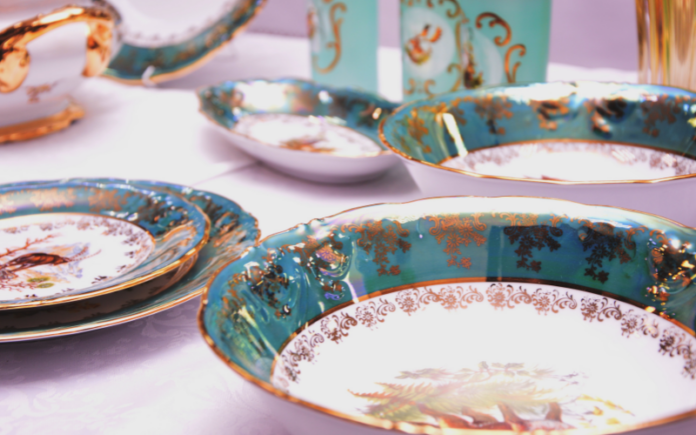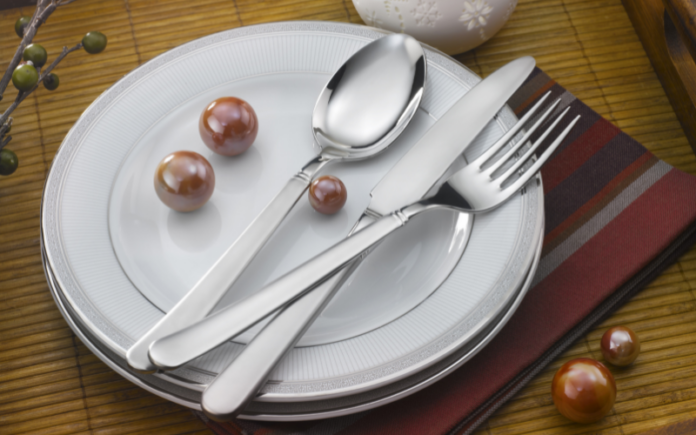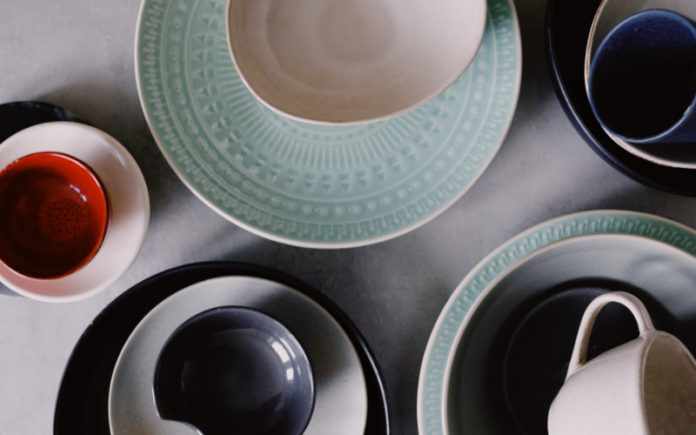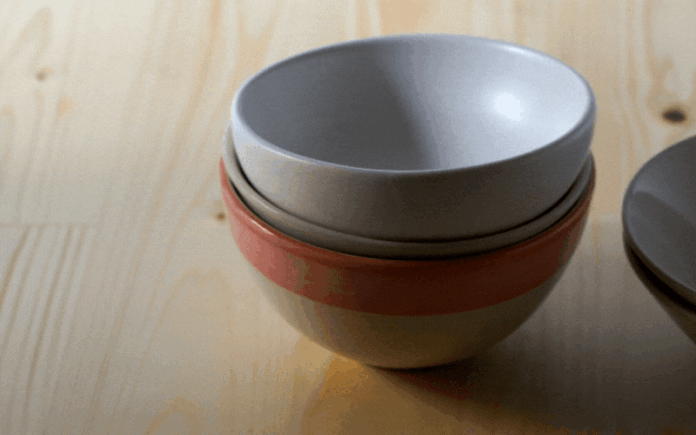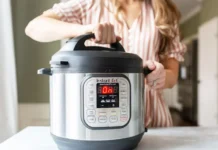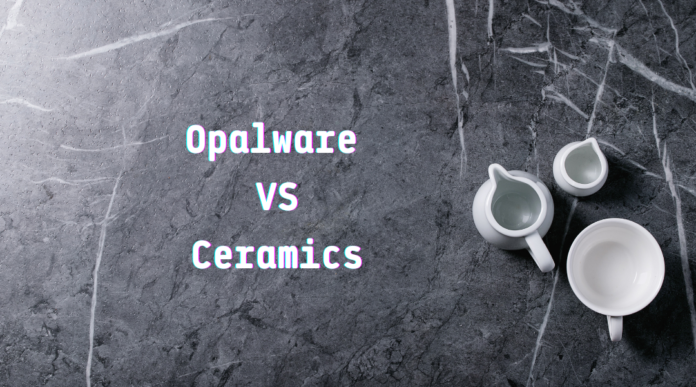
Are you looking for a new dinnerware set and aren’t sure which one would suit your needs best — opal ware or ceramic? Worry not because we’re here to provide you with all the answers!
Looking for the best dinnerware can take quite a lot of time and effort. There is no shortage of materials manufacturers use nowadays to create all kinds of sleek and pretty dinnerware sets for everyone’s needs.
However, knowing which of these sets are high in quality and which ones are just pretty is not an easy task. Luckily, we’re here to help.
If you don’t want to waste time purchasing a random dinnerware set only to realize it’s not made for your needs and return it, you should do some research before making your final decision.
We provide you with essential information regarding these two dinnerware sets, including what they are, how they’re made, and what benefits they will offer you.
That way, you can choose the one that meets your requirements perfectly in a jiffy! Let’s not waste any time and hop right into it.
What Is Opalware?
In order to decide which of these two dinnerware sets would be best for you and your needs, you first need to know what they are and how they’re made.
We’ll start by explaining what opal ware is first, and then proceed to elaborate on ceramic.
Opalware is a distinctively white-colored glass material. It’s made by using German technology to siphon the material from super strong toughened opal glass. It is also typically produced using fluorine.
When glass is tempered, a condition of resistance to thermal shocks with temperature fluctuations of up to 135°C is achieved. Businesses utilize this material to create dinnerware that is both enduring and beautiful.
Opalware is shatter-resistant, chip-resistant, and fracture-resistant, as well as microwave safe. It’s manufactured by rapidly cooling raw materials after heating them to various temperatures for recrystallization.
It also underwent a series of tests before being made available to the general public, including drop ball, scratch, and thermo-resistance tests.
Opalware Benefits
If you aren’t sure which of these dinnerware sets to get, you should find out as much as possible about the benefits they provide. To cut your search in half, we provide you with a list of the main benefits opalware dinnerware provides you with—check it out below:
- It is highly durable
- It has excellent resistance to breaking
- It is suitable for microwaves
- It can be stacked
- It is lightweight
- It has a sophisticated and classy look
- It can go in the freezer
- It can go in the microwave and is dishwasher safe
- It resists chipping readily
- Because it is non-porous, food particles cannot be absorbed when using it
For everyone who wants to have a set of very classy-looking and sophisticated dinnerware, opalware might prove as a better option.
If you’re looking for something more modern and sleek, chances are ceramic sets would boast more options.
What Is Ceramic?
Now that you’re familiar with opalware and know how opalware dinnerware sets are made, it’s time we talk about the ceramic ones.
Ceramic dinnerware is essentially any dish composed of clay, molded, and then hardened by heat. Clay is occasionally combined with other substances including water. After being dug out of the ground, clay is combined with water and other ingredients to make it flexible and bendable.
When something is easily moldable, it may be formed into a variety of shapes. Once it has been formed, it is fired in a kiln at a high temperature (depending on the sort of pottery you are making). There are three main types of ceramic, and they are stoneware, earthenware, and porcelain.
These dishes are corrosion-resistant, but they are also hard, tough, and chippable. Unless, of course, you accidentally drop one. Pure, conventional ceramic cookware can withstand high temperatures, making it safe to use in the oven and microwave.
This implies that ceramic is used to create ceramic cookware, such as frying pans, as well as a natural and non-toxic non-stick coating, in addition to ceramic cups, plates, and bowls. Typically, glazes are applied to these dishes, giving them color.
Ceramic Pros and Cons
As you already know, opalware dinnerware sets boast certain advantages. However, ceramic dinnerware sets have their own sets of benefits you will find super useful and convenient. Take a look below to see what pros this type of dinnerware set has to offer:
- It is very safe for your health
- It is super heat friendly, so you don’t have to worry about putting it in your oven
- It is very durable and sturdy
- It is non-sticky
- It is quite versatile, which means you can find it in a variety of shapes and sizes
- It is usually inexpensive
- It doesn’t contain vinyl and chemicals
- It doesn’t absorb chemicals like plastic
- It boasts stable thermodynamics and chemical stability
Deciding which of these two dinnerware sets to go for can be a bit difficult since both of them provide you with certain advantages. You should think about what you need and which one would suit your needs better.
If you need a classy set for your upcoming birthday dinner, going with an opal ware set should be a good call. However, if you plan on using your dinnerware for cooking regularly and use it on high heat, then going with a ceramic one is a better option.
Conclusion
Choosing the best dinnerware set is not always fun and games. Sometimes, making the right decision requires you to think hard and get properly acquainted with several sets until you come across the one that is made for you and your needs.
You should always make sure to think about your preferences and check whether the set you want to purchase provides you with everything you need from it aside from looking pretty. That way, you won’t have any issues using your dinnerware at any time and in any way you wish to!

